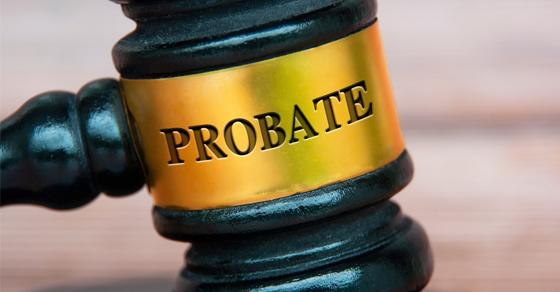
Few estate planning subjects are as misunderstood as probate. Its biggest downside, and the one that grabs the most attention, is the fact that probate is public. Indeed, anyone who’s interested can find out what assets you owned and how they’re being distributed after your death.
And because of its public nature, the probate process can draw unwanted attention from disgruntled family members who may challenge the disposition of your assets, as well as from other unscrupulous parties.
What does the probate process entail?
Probate is predicated on state law, so the exact process varies from state to state. This has led to numerous misconceptions about the length of probate. On average, the process takes no more than six to nine months, but it can run longer for complex situations in certain states. Also, some states exempt small estates or provide a simplified process for surviving spouses.
In basic terms, probate is the process of settling an estate and passing legal title of ownership of assets to heirs. If the deceased person has a valid will, probate begins when the executor named in the will presents the document in the county courthouse. If there’s no will — the deceased has died “intestate” in legal parlance — the court will appoint someone to administer the estate. After that, this person becomes the estate’s legal representative.
With that in mind, here’s how the process generally works, covering four basic steps.
First, a petition is filed with the probate court, providing notice to the beneficiaries of the deceased under the will. Typically, such notice is published in a local newspaper for the general public’s benefit. If someone wants to object to the petition, they can do so in court.
Second, the executor takes an inventory of the deceased’s property, including securities, real estate and business interests. In some states, an appraisal of value may be required. Then the executor must provide notice to all known creditors. Generally, a creditor must stake a claim within a limited time specified under state law.
Third, the executor determines which creditor claims are legitimate and then meets those obligations. He or she also pays any taxes and other debts that are owed by the estate. In some cases, state law may require the executor to sell assets to provide proceeds sufficient to settle the estate.
Fourth, ownership of assets is transferred to beneficiaries named in the will, following the waiting period allowed for creditors to file claims. If the deceased died intestate, state law governs the disposition of those assets. However, before any transfers take place, the executor must petition the court to distribute the assets as provided by will or state intestacy law.
For some estate plans, the will provides for the creation of a testamentary trust to benefit heirs. For instance, a trust may be established to benefit minor children who aren’t yet capable of managing funds. In this case, control over the trust assets is transferred to the named trustee. Finally, the petition should include an accounting of the inventory of assets unless this is properly waived under state law.
Can probate be avoided?
A revocable living trust may be used to avoid probate and protect privacy. The assets are typically transferred to the trust during your lifetime and managed by a trustee that you designate. You may even choose to act as a trustee during your lifetime. Upon your death, the assets will continue to be managed by a trustee or, should you prefer, the assets will be distributed outright to your designated beneficiaries.
Contact us with any questions regarding the probate process.
© 2024
